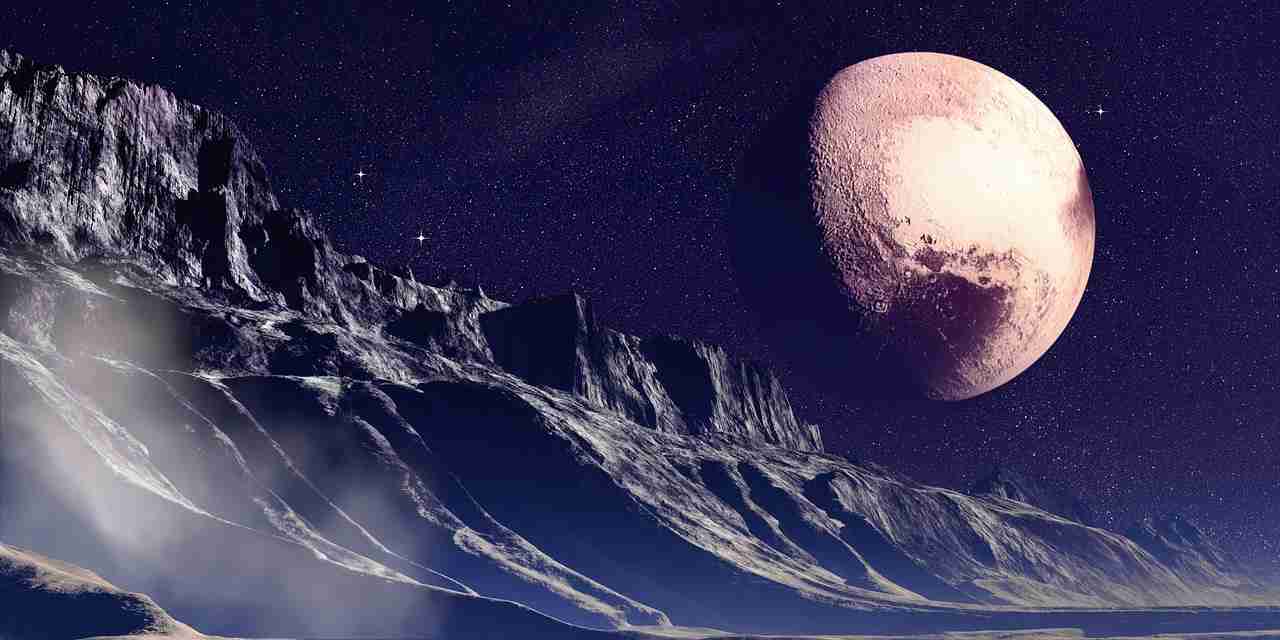22 Fun Facts About Pluto | Cosmic Oddities
1. Pluto was discovered in 1930 by Clyde Tombaugh.
Clyde Tombaugh discovered Pluto on February 18, 1930, while searching for a ninth planet to explain Neptune and Uranus’s odd orbits. Using the 13” Lawrence Lowell Telescope, he spotted Pluto where predictions suggested.
This discovery, beyond Neptune, confirmed it wasn’t an asteroid but a new planet. Tombaugh’s search for planets continued until 1942, and the telescope later helped study asteroids, and comets, and search for moons around Earth and the Moon.
2. Pluto is named after a Roman God.
One of the unique facts about Pluto is its name, which comes from the Roman god of the underworld, reflecting its cold, distant nature from the Sun. This name choice follows the tradition of naming planets after Roman gods.
Originally, in Greek mythology, Pluto was known as Hades, the ruler of the underworld. The Romans, adopting Greek mythology, preferred Pluto, linking it to death and the wealth of the earth.
3. Pluto, once the 9th planet of the solar system, is a Dwarf Planet.
In 2006, Pluto was reclassified from the ninth planet to a “dwarf planet” by the International Astronomical Union, sparking global controversy. This decision was based on Pluto’s inability to clear its orbit, despite being spherical.
The change challenged traditional views of the solar system, leading to widespread disagreement even years later, as many felt it disregarded history and tradition over scientific criteria.
4. New Horizons is the only spacecraft to have visited Pluto.
NASA’s New Horizons, launched in 2006, is the only spacecraft to have visited Pluto, conducting a historic flyby on July 14, 2015. It provided unprecedented details about Pluto and its moons, then continued to explore Arrokoth in 2019, the most distant object visited by a spacecraft.
Initially aimed at the last unexplored planet, New Horizons embarked on its journey when Pluto was still considered a planet.
5. Pluto is in the Kuiper Belt, a region filled with small icy bodies.
Another interesting fact about Pluto is its residence in the Kuiper Belt, a vast, doughnut-shaped region beyond Neptune filled with icy bodies. This area, much larger and more massive than the main asteroid belt, contains millions of objects left from the solar system’s formation.
So far, only NASA’s New Horizons has explored Pluto here, revealing the belt’s significance in understanding our cosmic neighborhood.
6. Pluto completes its one orbit around Sun in 248 Earth years.
Pluto completes one orbit around the Sun in 248 Earth years, traveling at an average speed of 10,623 miles per hour. Its orbit is unique, tilted at 17 degrees, and more elliptical than other planets.
Interestingly, Pluto rotates on its side, and for 20 years of its orbit, it’s closer to the Sun than Neptune, yet they never collide due to a stable orbital resonance.
7. Pluto has only about 6% gravity of Earth.
One of the cool facts about Pluto is its low gravity, which is only about 6% of Earth’s. This means if you weigh 100 pounds on Earth, you’d only weigh about 6 pounds on Pluto.
Despite being so far from Earth, recent discoveries have shed light on its surface. With gravity roughly one-fifteenth that of Earth’s, Pluto offers a unique perspective on what it means to be lightweight in the solar system.
8. Pluto has five known moons.
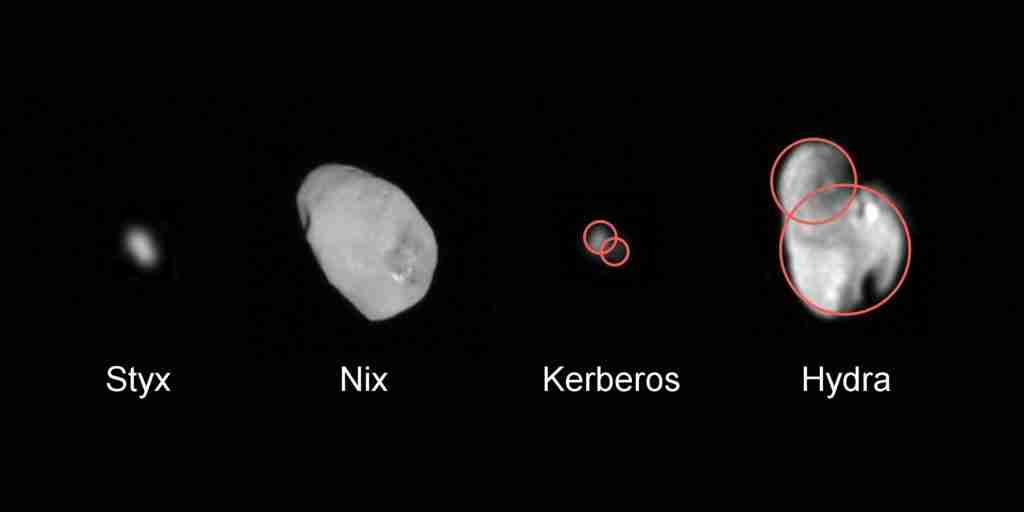
Pluto has five moons: Charon, Styx, Nix, Kerberos, and Hydra, formed from a collision with another Kuiper Belt Object. Charon, the largest, is about half Pluto’s size, making it the largest moon relative to its planet in our solar system.
The moons orbit closely, within a compact, largely empty space, suggesting little room for more moons. Their orbits are circular and coplanar, showing a tightly bound system.
9. Pluto’s atmosphere freezes and snows back on it.
Pluto experiences dramatic temperature shifts that cause its atmosphere to freeze and snow onto its surface when it’s distant from the Sun. As it orbits closer, sunlight vaporizes surface ices of nitrogen, methane, and carbon monoxide, forming a temporary atmosphere.
This cycle results in periodic snowfalls. Additionally, Pluto’s atmosphere contains toxic carbon monoxide, adding to the dwarf planet’s intriguing and harsh environmental conditions.
10. Pluto crosses Neptune’s orbit every 248 years.
Pluto’s unique orbit crosses inside Neptune’s for 20 years every 248 years, making it the only planet with this trait. This is due to a 3:2 orbital resonance with Neptune, ensuring they never collide despite their intersecting paths.
From 1979 to 1999, Pluto was even closer to the Sun than Neptune. Their orbits appear to intersect in two dimensions, but they never occupy the same space.
11. Tombaugh Regio is a heart-shaped feature on Pluto’s surface.
Tombaugh Regio, often referred to as Pluto’s heart due to its shape, is the largest bright feature on the dwarf planet, named after its discoverer, Clyde Tombaugh. Located just north of Pluto’s equator, this significant plain influences the planet’s winds.
Its position is to the northeast of the dark region Cthulhu Macula and northwest of Krun Macula, making it a standout characteristic on Pluto’s surface.
12. Moon Charon of Pluto has 700 km long and 9 km deep Canyon.
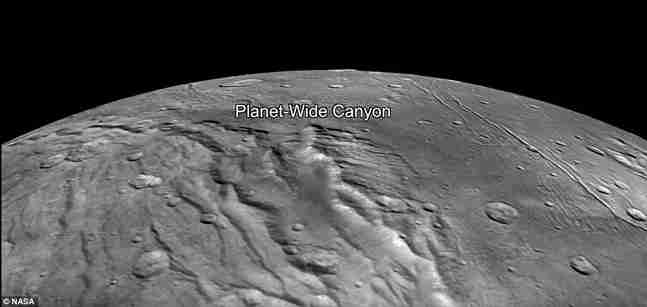
Another fascinating fact about Pluto’s largest moon, Charon, is its Argo Chasma canyon system. This colossal feature stretches about 700 kilometers, outdoing the Grand Canyon in both length and depth.
With depths estimated at nine kilometers, it’s over five times deeper than its Earthly counterpart. This makes Argo Chasma not just a marvel on Charon, but a standout in the solar system for its sheer size and depth.
13. Pluto’s atmosphere forms a comet-like tail due to solar winds.
Pluto’s atmosphere, mainly nitrogen, gets ionized by the Sun’s ultraviolet light and is carried away by solar winds, forming a comet-like tail. This tail, detected by New Horizons’ instruments, stretches between 48,000 and 68,000 miles.
Similar to Mars and Venus, Pluto lacks a global magnetic field, allowing solar winds to strip away its atmosphere, creating this unique feature in the solar system.
14. Pluto spins backward in retrograde rotation.
Pluto rotates in a unique way, spinning backward compared to most planets, a movement known as retrograde rotation. Its day lasts about 153 hours due to this slow spin.
Additionally, Pluto’s axis is tilted at 57 degrees, meaning it rotates almost on its side, similar to Venus and Uranus. This unusual tilt and retrograde motion make Pluto’s rotational behavior distinct in our solar system.
15. Pluto has a thin atmosphere composed mostly of nitrogen.
Pluto’s atmosphere is primarily nitrogen, with methane and carbon monoxide traces. Originating from surface ices, this thin atmospheric layer undergoes dramatic seasonal changes due to Pluto’s unique orbit and axial tilt.
As Pluto orbits further from the Sun in its 248-year cycle, its atmosphere freezes and descends as snow. This process, influenced by high-energy radiation, also creates layered hazes from these gases.
16. Eris’s discovery led to Pluto’s reclassification as a dwarf planet.
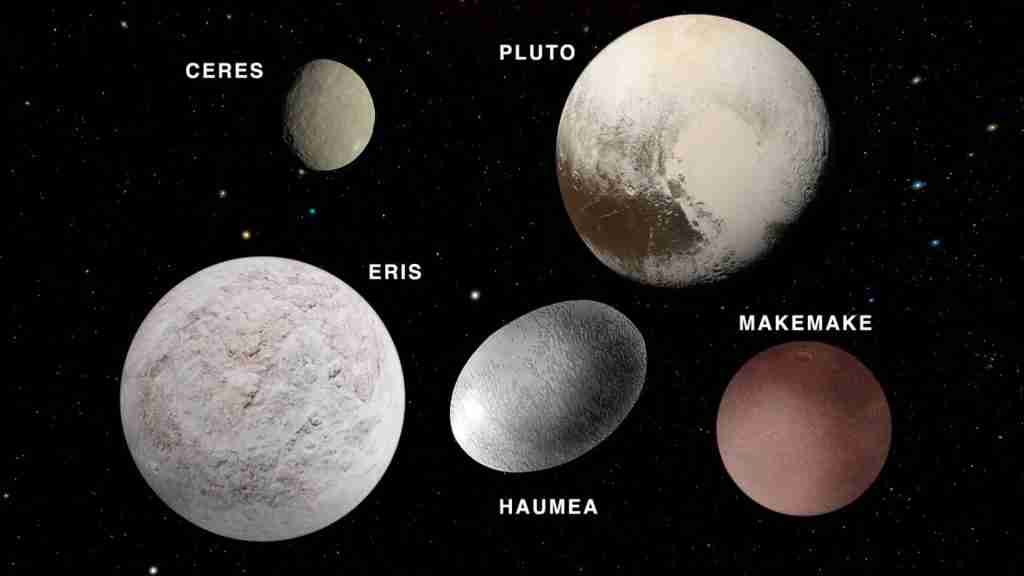
The discovery of Eris, a dwarf planet in the Kuiper Belt, on January 5, 2005, sparked a significant debate among astronomers. This debate led to the reclassification of Pluto as a dwarf planet in 2006 by the International Astronomical Union.
Found by Mike Brown, Chad Trujillo, and David Rabinowitz, Eris’s discovery challenged the definition of a planet, highlighting the need for clearer classification criteria in the astronomical community.
17. Pluto may contain a subsurface ocean beneath its ice shell.
NASA’s New Horizons images suggest Pluto likely harbors a subsurface ocean beneath its ice shell, existing since its formation 4.5 billion years ago. This underground ocean, potentially encircling the rocky core, may have developed from heat generated by radioactive elements.
Current models support the existence of this liquid water ocean as a plausible scenario, indicating a complex and dynamic interior structure within the dwarf planet.
18. Plutot’s orbit is inclined at 17 degrees angle to the ecliptic plane.
Pluto’s orbit is uniquely eccentric and inclined at 17.1° to the ecliptic plane, making it more elongated and tilted than any other planetary orbit. Its path around the Sun varies from 29.7 to 49.5 astronomical units, showcasing its significant distance changes.
This inclination, second only to Mercury’s 7° deviation, has sparked various theories about Pluto’s origin, highlighting its exceptional orbital characteristics within our solar system.
19. Pluto’s sky stays black in daytime due to its thin atmosphere.
Another unique fact about Pluto is its extremely thin atmosphere, which means during the day, the sky remains black, allowing stars to be visible even with the Sun up.
As Pluto orbits closer to or further from the Sun, its atmosphere expands or collapses, much like a comet’s. This results in a daytime sky where the Sun shines like a bright star against the dark backdrop, alongside visible stars and planets.
20. The Kuiper Belt has thousands of more icy bodies like Pluto.
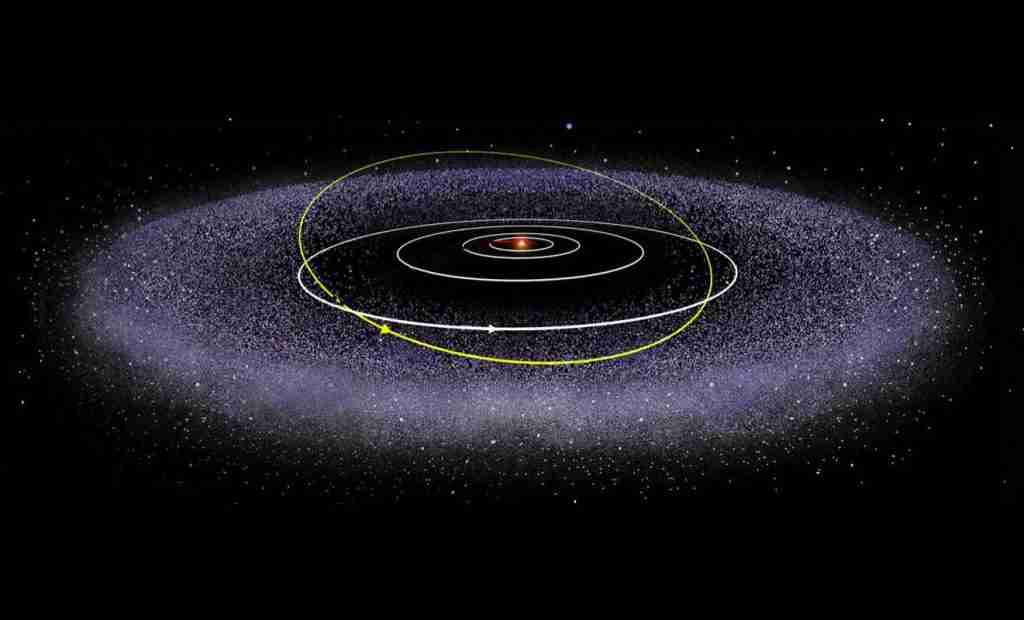
The Kuiper Belt, where Pluto resides, hosts hundreds of thousands of icy objects and potentially a trillion comets, spanning from 30 to nearly 1,000 astronomical units from the Sun.
This expansive region includes dwarf planets such as Pluto, Eris, Makemake, and Haumea, alongside countless smaller bodies, their growth into a larger planet hindered by Neptune’s gravitational disruption.
21. Pluto has white-capped mountains like Earth.
Pluto uniquely features white-peaked mountains, similar to Earth’s, but with a twist: their white caps are made of methane frost, not snow. Among these, Wright Mons and Piccard Mons stand out near Pluto’s south pole, resembling icy volcanic calderas.
These mountains, towering miles high and spanning at least 60 miles across, echo the size and shape of Hawaiian shield volcanoes, showcasing Pluto’s diverse geology.
22. Besides Pluto, there are four more dwarf planets.
The International Astronomical Union recognizes five dwarf planets in our solar system, including Pluto. The others, in order of their distance from the Sun, are Ceres, located in the asteroid belt, and Haumea, Makemake, and Eris, which reside in the Kuiper Belt beyond Neptune.
These celestial bodies share the classification due to their ability to orbit the Sun while not clearing their orbital paths of other debris.
FAQs
Pluto was reclassified from a planet to a dwarf planet in 2006 by the International Astronomical Union (IAU). This decision was based on Pluto’s inability to clear its orbit around the Sun of other debris, a criterion for full-fledged planets. Additionally, its size and mass were considered too small compared to other planets.
The distance between Pluto and Earth varies due to both planets’ elliptical orbits. On average, Pluto is about 3.67 billion miles (5.9 billion kilometers) away from Earth. At its closest approach, this distance can shorten slightly, but Pluto remains one of the solar system’s most distant objects from Earth.
Pluto has five known moons: Charon, Styx, Nix, Kerberos, and Hydra. Charon, the largest of these, is so big relative to Pluto that they are sometimes referred to as a double dwarf planet system. The moons are believed to have formed from a collision early in the solar system’s history.
Pluto was officially reclassified as a dwarf planet in August 2006 by the International Astronomical Union. This decision came after the discovery of several other objects of similar size in the Kuiper Belt, leading to the need for a clearer definition of what constitutes a planet.
Pluto’s surface temperature varies, but it is extremely cold, ranging from about -375 to -400 degrees Fahrenheit (-225 to -240 degrees Celsius). This wide range is due to Pluto’s elliptical orbit, which causes significant variation in its distance from the Sun and, consequently, its surface temperature.

